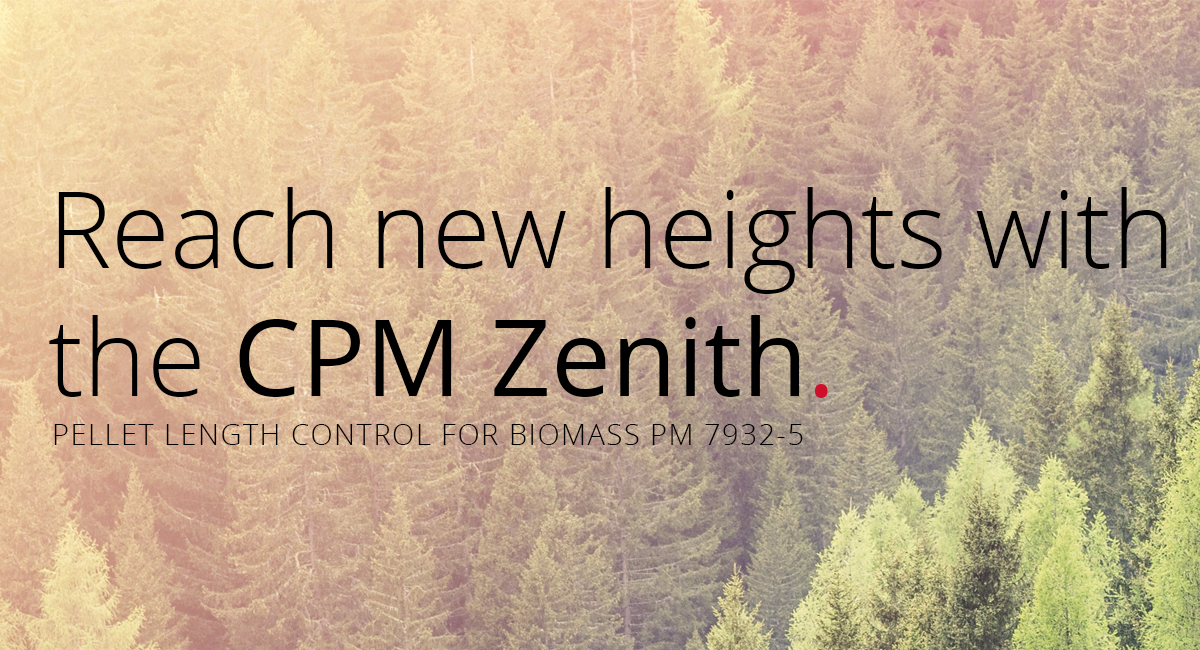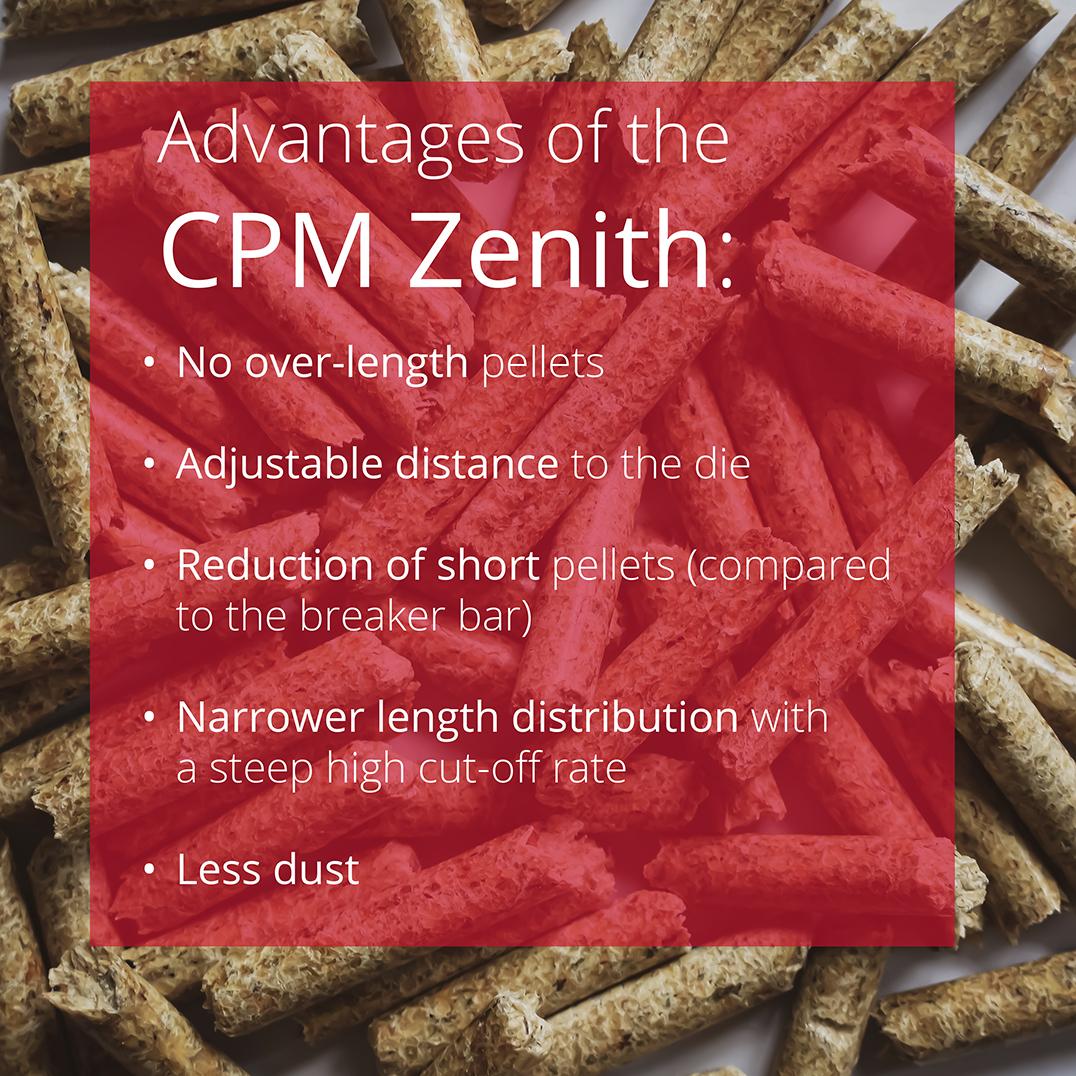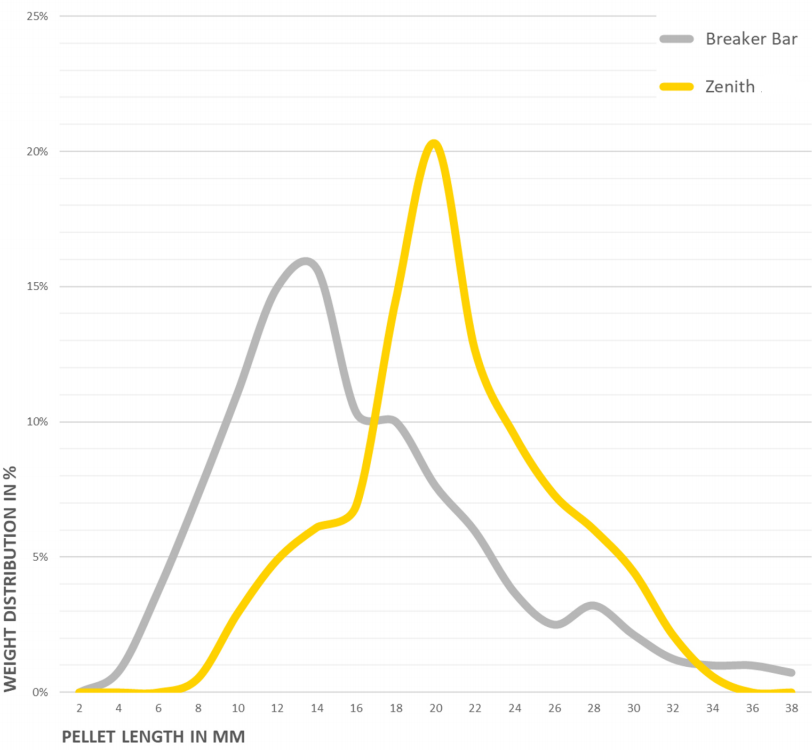

Knives are positioned around the die circumference in order to cut pellets sticking out of the die. However, knives do not prevent longer pellets from flying out of the dies’ counterbores, as they only cover a small section of the dies/ circumference. For this reason, long pellets (over 50mm) are not cut and can be present in the end-product. The ratio at which long pellets are present is of course dependent on the length at which pellets are produced from the die (when no means of cutting would be applied, the so-called ‘zero measurement’).
Breaker bars were specifically developed for residential wood pelleting. In this industry, pellet length is important as pellet quality is associated with its size. Besides (subjective) visual appeal, size matters when considering the (often) pneumatic pellet transport through narrow ducts in household central heating systems. Excessively long pellets can cause an obstruction, ultimately resulting in a cold house.
Initially, Breaker Bars covered a part of the die’s circumference. When improvements were made their length was increased to cover almost the complete circumference (both for 7930-4 and 7932-5), making them much more effective than knives in avoiding ‘over-lengths’. Pellets flying outwards out of the die, will (almost) always ‘hit’ a breaker bar and be broken into shorter pieces. This however also reveals the drawback of the breaker bar: almost every pellet hits the breaker, including those that are already of the right length resulting in a relatively high fraction of short pellets. However, some long pellets still do escape impact and so breaker bars cannot completely avoid ‘over-lengths’. To make the fraction of ‘over-lengths’ minimal, breaker bars are often positioned very close to the die, meaning more short pellets are produced.

Season’s Greetings and important information about our closing hours
continue reading